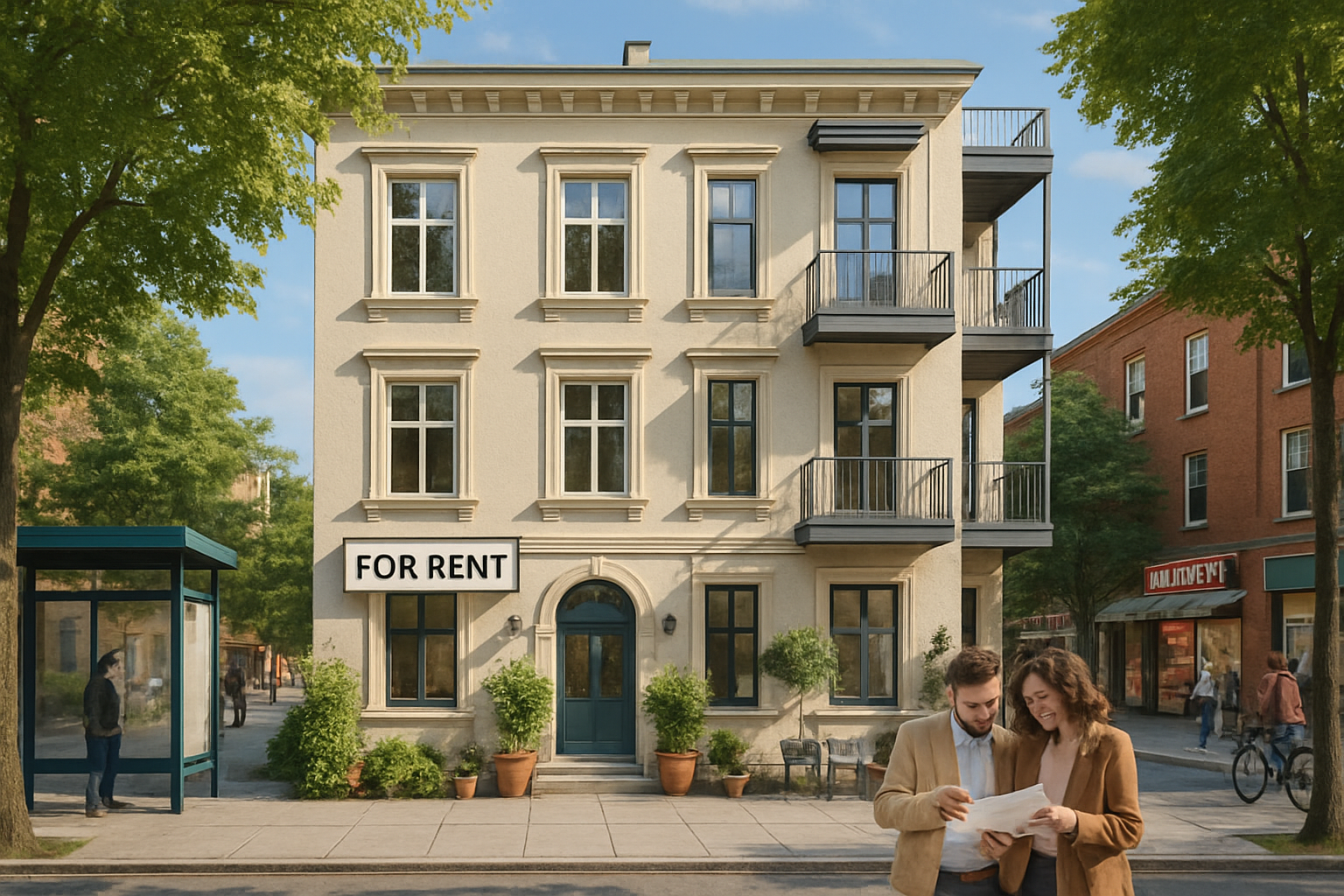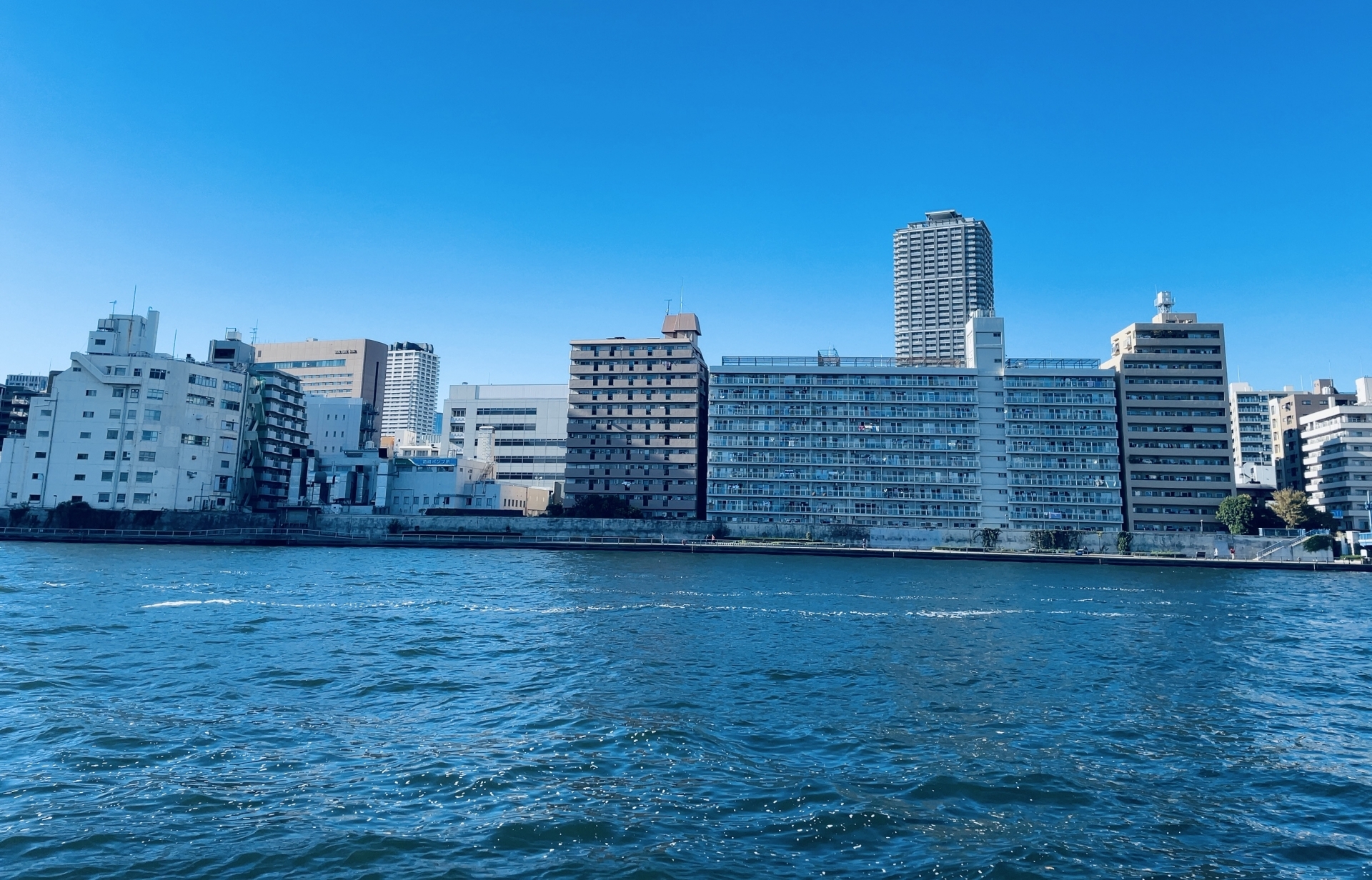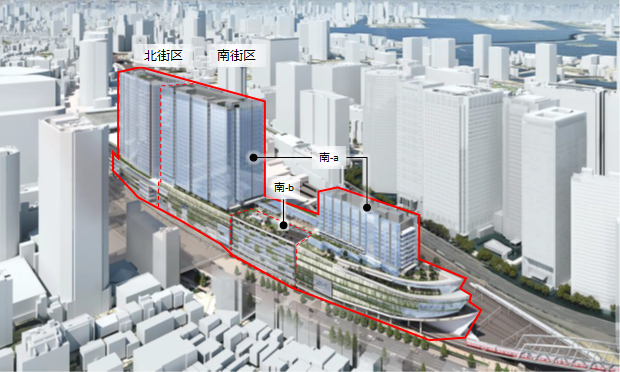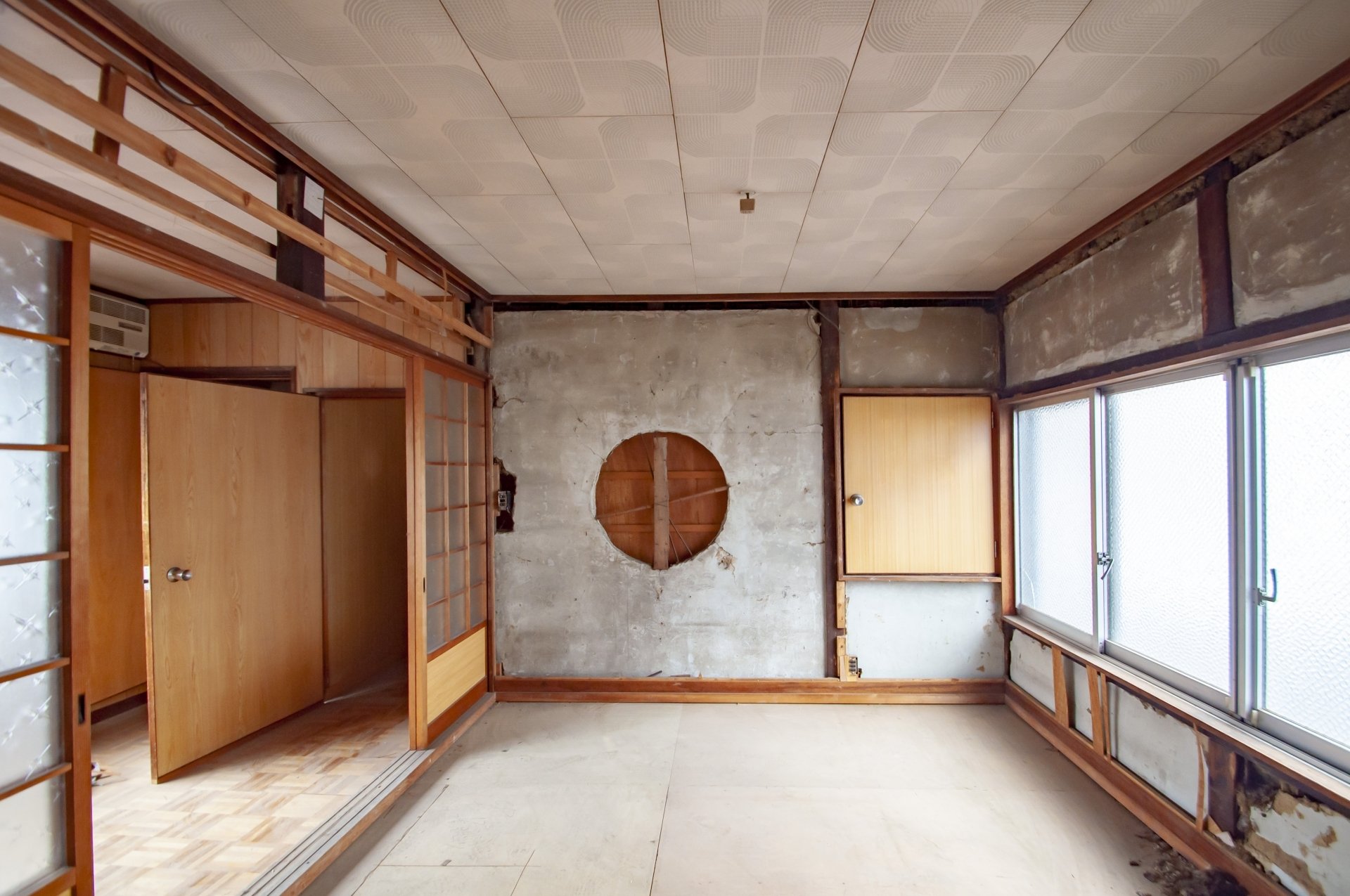In recent years, interest in real estate investment has been growing against a backdrop of uncertainty about the future and the need to secure funds for retirement. In particular, a structure that provides a stable monthly rental income has become an attractive option for many investors.
As INA & Associates, Inc., I have supported many clients in their real estate investments. From my experience, I can tell you that with the right knowledge and proper strategy, real estate investment is an excellent way to generate stable income over the long term.
In this article, we will explain the basics of the real estate investment system and how to actually start earning rent income in an easy-to-understand manner for beginners. We will also include practical information such as how to calculate cash flow and the concept of yield.
We hope that this will be useful information for those who are considering real estate investment and those who have already started.
Basic Structure of Earning Rental Income from Real Estate Investment
What is rent income?
Rental income is the general term for income earned from renting owned real estate to third parties. This income is referred to as income gain in investment terms, and refers to the ongoing profit that can be earned by continuing to own the asset.
The most important characteristic of rental income in real estate investment is its stability. Like a stock investment, the price does not fluctuate on a daily basis, and once a tenant is found, you can expect a constant income every month for the duration of the contract.
From the experience I have shared with our clients, it is possible for even beginners in real estate investment to earn a stable income if they select and manage properties appropriately. In particular, even in Japan, where the population is declining, you can expect continuous demand for well-located properties.
Components of Rental Income
Rental income is not simply "rent. It actually consists of multiple income items, and it is important to understand each of them.
Rent is the core component of income. It is exempt from sales tax for residential properties, but is taxable for commercial properties. Rent setting is determined based on a comprehensive assessment of location, age of the building, facilities, and other factors.
Common service and management fees are collected from tenants to cover the cost of maintaining the common areas. They include elevator maintenance, cleaning costs, electricity costs, etc. Since their use is not legally restricted, they can be utilized at the owner's discretion.
A renewal fee is a fee received from tenants when they renew their lease contracts. Generally, the fee is set at one to two months' rent, and is charged every two years. However, setting a renewal fee may encourage tenants to move out, so it should be determined in consideration of local customs and competitive properties.
Key money is a gratuity received from the tenant when a new tenant moves in. Unlike a security deposit, it is income that does not need to be returned when a tenant moves out. In recent years, an increasing number of properties do not set key money in order to reduce the initial cost burden on tenants.
Other income includes parking fees, vending machine installation fees, and signboard advertising fees. Securing additional income by taking advantage of the property's characteristics is also an important factor in improving profitability.
| Income Item | Example of Amount | Frequency | Characteristics |
|---|---|---|---|
| Rent | 80,000 yen | Monthly | Main income, tax-exempt for residential use |
| Common service fee | 5,000 yen | Monthly | Common area maintenance fee, unrestricted use |
| Renewal fee | 80,000 yen | Every 2 years | Contract renewal fee varies by area |
| Key money | 80,000 yen | When moving in | First time only, non-refundable |
| Parking fee | 10,000 yen | Monthly | Demand varies depending on location |
How to calculate cash flow
Even if you earn rental income, not all of it remains in your pocket. The key to a successful real estate investment is to accurately grasp the cash flow, which is the actual remaining cash on hand.
Cash Flow = Rental Income - Operating Expenses - Loan Repayment
Operating expenses include the following items
Management fees are generally about 5% of rent income as an outsourcing fee to a management company. This is not necessary in the case of self-management, but the time and effort required to deal with tenants and manage the building should be taken into consideration.
Repair expenses are the cost of repairing broken equipment and deterioration over time. The older the property is, the higher the repair cost tends to be. It is important to expect 5-15% of the annual rental income.
Property tax and city planning tax are taxes levied on the assessed value of a property. The tax is levied on the owner as of January 1 of each year and is paid in four annual installments.
Insurance premiums are for fire and earthquake insurance. Membership is often required to obtain financing, and is estimated to cost from several tens of thousands to several hundred thousand yen per year.
Monthly rental income: 100,000 yen
Annual rental income: 1,200,000 yen
Annual expenses:
-Management fee: 120,000 yen (10%)
-Repair expenses: 120,000 yen (10%)
-Property tax: 80,000 yen
-Insurance: 30,000 yen
-Other: 50,000 yen
Total expenses: 400,000 yen
Annual loan repayment: 600,000 yen
Annual cash flow: 1,200,000 yen - 400,000 yen - 600,000 yen = 200,000 yen
Monthly cash flow: approximately 16,700 yen
As shown above, the actual amount of cash remaining after deducting various expenses and loan repayments from the rental income is the actual amount of cash remaining. When making investment decisions, it is important to consider this cash flow as a basis.
Types and Characteristics of Real Estate Investment
There are multiple methods of real estate investment, each with different characteristics and risk/return relationships. It is important to understand the characteristics of each method, as the best option depends on the investor's financial resources, experience, and risk tolerance.
Condominium Unit Investment
Condominium unit investment is a method of purchasing a single unit of a condominium for sale and managing it as a rental property. This is one of the most recommended investment methods for beginners in real estate investment.
The biggest advantage of condominium unit investment is the low initial investment. Compared to a single building, the initial investment is several million yen to several tens of millions of yen, so even salaried workers can start investing by taking advantage of financing.
In addition, if the property is a condominium in a good location, the management association is responsible for building management and maintenance of common areas, thus reducing the management burden on the owner. They are also highly liquid at the time of sale and can be cashed out in a relatively short period of time if necessary.
On the other hand, there are some points to be aware of when investing in condominium units: since only one unit is managed, vacancies can result in a complete loss of rental income. In addition, the yield tends to be lower than that of a single building because of the smaller percentage of land owned.
When advising clients, I tell them to place particular emphasis on location and building management when considering investing in condominium units. If the property is within a 10-minute walk from a station and is less than 20 years old, you can expect stable rental demand.
Investment in single building apartments and condominiums
The investment in a single apartment or condominium is a method of owning the entire building and operating multiple units for rent. This investment method is expected to be highly profitable due to economies of scale.
The most attractive feature of investing in a single building is the ability to secure multiple sources of income: in a 10-unit apartment building, even if one unit becomes vacant, the rental income from the remaining 9 units will continue. This diversification effect makes it easier to maintain a steady cash flow.
In addition, since you own the entire property, including the land, you can freely determine the management policy for the building. Measures to improve profitability can be proactively implemented, such as adding value through remodeling and capital investment, and adjusting rent settings.
Yields tend to be higher for single-building investments than for condominiums. Some used apartment buildings in rural areas offer surface yields of 10% or more. However, higher-yielding properties often involve more risk in terms of location and building conditions, so careful consideration is required.
Since the scale of investment is larger, the initial investment can range from tens to hundreds of millions of yen. Loan approval is also stricter, and emphasis is placed on annual income, asset status, and investment experience. In addition, since you will be responsible for the maintenance and management of the entire building, you will need to formulate a repair plan and be prepared for large-scale repairs.
Other Real Estate Investments
Single-family home investment is a method of purchasing a single-family home and managing it as a rental property. Since it targets families, once tenants move in, they are expected to stay for a long period of time. The retention rate of tenants is high due to the children's schooling and other factors.
In the detached house investment, since you own both the land and the building, you can expect the land value to increase in the future. In addition, since the building can be freely managed and repaired, it can be customized to meet the needs of tenants.
Parking lot management is a method of utilizing land as a parking lot. Since no building construction is required, the initial investment can be started with a low cost. There are two types of management methods: monthly parking lots and coin-operated parking, which are selected according to location and demand.
The advantage of parking lot management is the ease of conversion. Even if you want to change the use of the land to another use in the future, there is no need to pay for the demolition of the building, thus allowing for flexible land use.
Commercial real estate investment is for commercial properties such as office buildings, stores, and warehouses. Compared to residential properties, higher rents can be set, but they are more susceptible to economic fluctuations and tend to have longer vacancy periods.
| Type of Investment | Initial Cost Estimate | Surface Yield | Risk level | Management effort | Suitability for beginners |
|---|---|---|---|---|---|
| Condominiums | 5 million yen to 20 million yen | 4~6% of the total | Low | Small | ◎Single-unit apartments |
| One-building apartment | 30 to 100 million yen | 6-10% ◎ Medium | Medium | Medium | Negative |
| Single-unit condominiums | 100 million yen and up | 5~8 | Medium | Large | ×x |
| Detached house | 10 million yen to 30 million yen | 5-8% (5-8%) | Medium | Medium | ○ ○ ○ ○ ○ ○ ○ ○ ○ ○ ○ ○ ○ ○ ○ ○ ○ ○ ○ ○ ○ ○ ○ |
| Parking lot | 1 million yen to 5 million yen | 3~5 | Low | Small | ○ ○ |
| Commercial real estate | 50 million yen and up | 5~12% High | High | Large | ×x |
As can be seen from this table, initial cost, risk, and expected return are closely related. When starting an investment, it is important to select an appropriate investment approach based on your financial resources and experience.
Specific Steps to Earn Rental Income
A systematic approach is essential to generating stable rental income from real estate investments. Based on my experience advising clients, here are some specific steps to increase your chances of success.
Step 1: Set investment goals
Before starting a real estate investment, it is important to set clear investment goals. If you start investing with unclear goals, it will be difficult to select appropriate properties and develop an investment strategy.
Set a specific target income amount. Clarify whether you are aiming for a monthly rental income of ¥100,000 or an annual real estate income of ¥2 million. This goal will determine the size of the investment and the number of properties required.
The investment period is also an important factor; whether you intend to sell the property after five years or hold it for 20 years or longer will affect the criteria for selecting a property. For long-term holdings, the future potential of the location is important, while for short-term investments, the liquidity of the market should be taken into consideration.
It is also essential to check your risk tolerance. Consider in advance to what extent you can accept the risk of loss of principal and whether you have sufficient funds in the event of vacancy.
Clarify the extent of your personal funds. We will determine the amount of money that can be prepared as a down payment, the maximum amount of borrowing in case of financing, and the price range of the property that can be invested.
What I tell our clients is that "investment is judged by numbers, not emotions. By setting clear goals, objective investment decisions can be made.
Step 2: Property Selection
Property selection is the most important factor in determining the success or failure of a real estate investment. It is necessary to comprehensively evaluate the location, building condition, and profitability, and make a decision from a long-term perspective.
Importance of Location
It is said that "location is everything" in real estate investment. A property in an excellent location can maintain stable rental demand even if it is a little older.
Convenience of transportation is the most important factor to consider. We will evaluate overall factors such as walking time from the nearest station, availability of multiple train lines, and access time to the city center. Especially for properties for singles, a 10-minute walk from the station is considered desirable.
The surrounding environment also greatly affects tenant satisfaction. We investigate the availability of commercial, medical, and educational facilities, public safety, and future development plans.
Demographic analysis is also important. We will identify changes in the target area's population, age structure, and household composition, and predict future rental demand.
Building Age and Building Condition
Building age has a direct impact on rent levels and maintenance costs. Newly constructed properties can offer higher rents, but they are also more expensive to purchase. Properties that are 10 to 20 years old are recommended for beginners, as they offer a good balance between price and rent.
The structure of the building is also an important determining factor. Reinforced concrete (RC) buildings are durable and have a long legal life of 47 years, making them suitable for long-term investment. Wooden apartments are less expensive, but have a shorter useful life of 22 years and tend to require more repair costs.
The condition of facilities also affects tenant satisfaction. Check for air conditioning, hot water supply, internet access, security equipment, and other amenities.
Yield Calculation and Profitability Assessment
The surface yield is the annual rental income divided by the property price. It is used as a simplified profitability indicator, but be aware that it does not take expenses into account.
The real yield is the annual rental income minus operating expenses divided by the total of the property price and other purchase costs. It is a more realistic measure of profitability.
As a rule of thumb when advising clients, I recommend real yields of 4% or more for condominiums and 6% or more for single-family apartments. However, for properties in a good location, even if the yield is low, stability may be more important.
Step 3: Financing and Purchase Procedures
In many cases, real estate investments utilize financing to purchase properties. Appropriate financing allows for efficient use of personal funds and expansion of the investment scale.
Balance between proprietary funds and financing
Generally, it is recommended to have a self-financing ratio of 20-30% of the property price. The higher the self-financing ratio, the more advantageous the loan approval process will be, and interest rate conditions tend to be better.
However, it is not necessary to purchase the property entirely with one's own funds. A moderate leverage effect can increase investment efficiency. The important thing is to have positive cash flow after loan repayment.
Use of Real Estate Investment Loans
Real estate investment loans are subject to different criteria than mortgages. In addition to the borrower's annual income and employer, the profitability of the investment property is also an important factor.
Loan terms and conditions vary widely among financial institutions. It is important to compare terms and conditions from multiple financial institutions, including city banks, regional banks, credit unions, and non-banks.
Loan terms are determined by the structure and age of the property: 25 to 35 years for RC construction and 15 to 25 years for wooden construction. The longer the loan term, the lower the monthly repayment, but the higher the total repayment.
Flow of Purchase Procedures
It usually takes about 1 to 2 months from the application to the settlement of the purchase of a property. The main procedures are as follows
The buyer makes an offer to purchase the property and negotiates the purchase price and delivery terms. If the terms are agreed upon, a purchase agreement is concluded and a deposit is paid.
At the same time, a loan application is made. Required documents are prepared, the property is evaluated as collateral, and the borrower is screened.
After loan approval, the settlement date is arranged. On the settlement date, the remaining balance is paid, ownership transfer is registered, financing is executed, and the keys are handed over.
Step 4: Start of rental management
After the property is purchased, tenant recruitment and rental management begins. In order to generate stable rental income, it is essential to have an appropriate management system in place.
Selecting a Management Company
Decide whether to outsource rental management to a management company or to self-manage. For beginners, outsourcing to a management company is recommended.
In selecting a management company, compare and consider the management track record, areas served, management costs, and service content. The ability to recruit tenants, respond to problems, and provide regular reports are important criteria.
The standard management fee is about 5% of rent income. The selection of a management company is based on a balance of services and price.
Tenant Recruitment and Contract
Effective tenant recruitment is important to shorten the vacancy period. It is necessary to set appropriate rent, take attractive photos of the property, and provide information to multiple real estate brokers.
Screening prospective tenants is another important task. Proof of income, verification of employer, and setting up a guarantor reduce the risk of rent delinquency.
When concluding a lease agreement, properly explain the terms and conditions of the contract, explain important matters, and receive security deposits and key money.
Steady implementation of these steps will build a foundation for stable rental income. A long-term perspective is important in real estate investment, and the key to success is to proceed systematically and without haste.
Taxation of Rental Income and Filing Tax Returns
When you earn rental income from real estate investment, you will need to file appropriate tax returns. It is important to understand the basic structure of the tax system to avoid missing deductions or paying excessive taxes due to lack of tax knowledge.
Calculation of Real Estate Income
Rental income is classified as " real estate income" for tax purposes. Real estate income is calculated by subtracting necessary expenses from the gross income.
Real estate income = real estate income - necessary expenses
Items included in real estate income:
Rental income is the primary source of income, but other items include the following
Common service and management fees, renewal fees, key money, parking lot fees, vending machine installation fees, and signboard advertising fees are included in real estate income.
As a rule, security deposits are not included in income because they are deposits. However, if there is a portion of the security deposit that is not returned when the tenant vacates the property (e.g., restoration costs), it is recorded as income for the year.
| Expenses Item | Description | Recording period | Points to note |
|---|---|---|---|
| Management fee | Consignment fee to management company | When paid | 5-10% of rent income |
| Repair expenses | Repair and replacement of facilities | When incurred | Note the distinction from capital expenditures |
| Depreciation expense | Decrease in building value | Every year | Depreciation period varies depending on structure |
| Property tax | Taxes on property | At time of tax payment | Land and buildings combined |
| City planning tax | Taxes within the city planning area | At the time of tax payment | Payable at the same time as property tax |
| Nonlife insurance premiums | Fire and earthquake insurance premiums | At the time of payment | Prorated for multiple years |
| Interest on loans | Interest portion of loan | At the time of payment | Principal repayment portion is not included in expenses |
| Tax accountant's fee | Tax return agent fees | At the time of payment | Only the portion related to real estate income |
| Transportation expenses | Transportation expenses for property inspection, etc. | When incurred | Proof of business relevance is required |
| Communication expenses | Communication expenses related to property management | When paid | Proportional calculation is required |
Calculation of depreciation
The building portion of the property decreases in value over time and can be expensed annually as a depreciation expense. Land is not subject to depreciation.
Depreciation is calculated over the statutory useful life of the building, which is determined by the structure of the building.
- Reinforced concrete (RC): 47 years
- Heavy steel construction: 34 years
- Light steel construction: 19 or 27 years
- Wooden construction: 22 years
For used properties, the following formula is used to calculate the useful life
In the case of a 15-year-old wooden apartment building (building value: 20 million yen)
Useful life = (22 years - 15 years) + 15 years x 0.2 = 7 years + 3 years = 10 years
Annual depreciation = 20 million yen / 10 years = 2 million yen
Procedures for filing tax returns
As a general rule, if you have real estate income, you are required to file an income tax return. Salaried workers are not required to file an income tax return if their real estate income is less than 200,000 yen, but they are required to file an inhabitant tax return.
When an income tax return is required:
- When real estate income exceeds 200,000 yen (salaried workers)
- If you have real estate income (non-salaried workers)
- If your real estate income is in the red and you want to add up your losses with other income.
Preparation of Required Documents
The following documents are required for filing a tax return. Organizing them in advance will ensure smooth filing.
Income-related documents:
- Lease contract
- Record of rental income (bankbook, remittance details from the management company, etc.)
- Records of receipt of key money and renewal fees
Expense-related documents:
- Management fee payment records
- Receipts of repair expenses
- Notification of property tax and city planning tax payment
- Receipts of property insurance premiums
- Certificate of loan balance at the end of the year
- Receipts of other expenses
Property-related documents:
- Sales contract
- Statement of Important Matters
- Certificate of registered matters
- Building plans
Timing of tax return
The tax filing period is from February 16 to March 15 every year. During this period, tax returns and tax payments are filed for the previous year's income.
Tax returns can be filed in person at the tax office, by mail, or electronically via e-Tax. e-Tax allows you to file your return 24 hours a day and receive your tax refund faster.
Use of Blue Returns
Tax benefits are available for real estate income tax returns if you choose to file a blue tax return.
The main advantages of filing a blue tax return:
- Blue return special deduction (100,000 yen or 650,000 yen)
- Inclusion in necessary expenses of the salary of a full-time employee of a blue business
- Deduction for net losses carried forward (3 years)
- Allowance for doubtful accounts
In order to file a blue tax return, an "Application for Approval of Blue Return" must be submitted to the tax office in advance. The application must be submitted by March 15 of the year in which the company intends to file a blue tax return (within 2 months of opening for business for new businesses).
Use of Profit and Loss Reconciliation
If your real estate income is in the red, you can reduce your total income and lower your tax burden by adding up your other income (e.g., employment income) against your loss.
Note, however, that interest on loans related to the acquisition of land may not be eligible for the profit and loss exclusion.
Since the taxation of real estate investment is often complex, we recommend that you consult a tax accountant if you need specialized knowledge. Proper tax treatment will help maximize investment returns.
Risk Management and Key to Success
Although real estate investment is a relatively stable investment approach, various risks exist. Properly understanding these risks and taking countermeasures can increase the probability of long-term investment success.
Major Risks and Countermeasures
Vacancy Risk
Vacancy risk is the most fundamental risk in real estate investment. When a tenant moves out, no rental income is earned until the next tenant is found.
The most important measure against vacancy risk is to choose the right location. You can shorten the vacancy period by choosing a property in an attractive location for tenants, such as near a station, with good commercial facilities, or in a safe area.
Setting an appropriate rent is also an important factor. Setting rents that are too high compared to market rates will prolong vacancy periods and consequently reduce profitability. Regular market surveys should be conducted to compare rents with competing properties and maintain appropriate rent levels.
Improving the attractiveness of the property is another effective measure. Renovating rooms, updating facilities, and beautifying common areas can increase tenant satisfaction and promote long-term occupancy.
Diversified investment in multiple properties can also reduce vacancy risk; even if one unit becomes vacant, rental income from other properties can supplement it.
Risk of Rent Decline
There is a risk of rent decline due to the age of the building and changes in the surrounding environment. In particular, rent declines tend to be more pronounced when the building is more than 20 years old.
As a countermeasure against the risk of rent decline, it is important to select properties with an emphasis on the future potential of the location. Select a location that is expected to be in demand over the long term, taking into account redevelopment plans, transportation infrastructure improvements, and demographic changes.
It is also important to maintain the property's competitiveness through regular maintenance and facility upgrades. We will maintain rent levels by updating air conditioners, improving the Internet environment, and installing security equipment.
Repair Risk
There is a risk of unexpected repair costs due to the aging of the building and facilities. Especially for older properties, repair costs may be high.
As a countermeasure against repair risk, it is important to diagnose the building before purchasing the property. Have an expert examine the condition of the structure, facilities, exterior walls, etc., and establish a plan for future repairs.
Prepare planned funds by setting up a reserve fund for repairs. By setting aside 10-15% of rent income for repairs, you can respond to unexpected repairs.
It is also important to prevent major repairs through regular maintenance. Early detection and repair of small defects can avoid major repair costs.
Risk of Rising Interest Rates
If financing is used, there is a risk that repayment amounts will increase due to rising interest rates. Borrowing at variable interest rates is directly affected by interest rate fluctuations.
To counter the risk of rising interest rates, consider borrowing at a fixed interest rate. During periods of rising interest rates, fixed interest rates allow for fixed repayment amounts.
Proper management of borrowing ratios is also important. Increasing the ratio of cash on hand can reduce the impact of rising interest rates.
Calculate cash flow assuming interest rate rises and confirm in advance whether the investment can continue even if interest rates rise.
Disaster Risk
There is a risk that properties may be damaged by natural disasters such as earthquakes, fires, and floods. Japan is a disaster-prone country, and appropriate countermeasures are necessary.
The basic measures against disaster risk are to purchase fire and earthquake insurance. Insurance can compensate for damage caused by disasters.
Select a location with low disaster risk by checking hazard maps. Risks of floods, landslides, earthquakes, etc. are identified in advance and reflected in the selection of properties.
Seismic performance of the building is also an important factor. Selecting a property that complies with the new earthquake resistance standards (1981 or later) will reduce earthquake risk.
Tips for Long-Term Asset Building
Diversified investment in multiple properties
Diversified investment in multiple properties is an effective way to obtain stable income from real estate investment. Diversifying by region, property type, and age can reduce risk.
Regional diversification can reduce the impact of economic conditions or disasters in a particular region. Diversify risk by investing in urban and suburban areas and in different prefectures.
Diversification of property types is also important. Stability is enhanced by combining properties with different characteristics, such as condominiums, single-family apartments, and detached houses.
Diversification of building age allows for the timing of repairs to be spread out. Avoid having all properties undergo major repairs at the same time and stabilize cash flow.
Periodic review of income and expenditures
Real estate investment is a long-term investment, and it is important to periodically review income and expenditures. It is necessary to adjust the investment strategy in response to changes in the market environment.
Once a year or so, a detailed analysis of the income and expenditure status of each property will be conducted. Trends in rental income, expenses, and cash flow will be reviewed, and countermeasures will be considered for problem properties.
We will confirm whether the current rent setting is appropriate by investigating the market rent. If it is lower than the market rent, we will review the rent, and if it is higher, we will adjust the rent in consideration of vacancy risk.
It is also important to review the repair plan. We check the deterioration of the building and recalculate the timing and cost of necessary repairs.
Grasping Market Trends
Real estate markets are affected by economic conditions, demographic trends, and policy changes. It is important to understand these trends and reflect them in investment strategies.
Demographic changes have a direct impact on rental demand. We regularly monitor changes in population trends, age structure, and household composition in the target area.
Trends in monetary policy are also important. Changes in interest rate policies and lending regulations have a significant impact on real estate investment.
We also gather information on tax system reforms. Since taxation systems related to real estate investment are regularly reviewed, we keep abreast of the latest information and reflect it in our investment strategies.
Cooperation with Experts
Collaboration with experts in various fields is important for successful real estate investment. Instead of making all decisions on your own, you can make better investment decisions by leveraging their expertise.
By working with a real estate company, you can gather market information, introduce properties, and receive assistance with the buying and selling process. It is important to find a real estate company you can trust.
By working with a tax accountant, you will receive support for proper tax treatment, tax-saving measures, and tax returns. It is important to select a tax accountant who is familiar with real estate investment.
Working with a management company can streamline property maintenance, tenant relations, and income/expense management. It is important to select a company with high management quality and to communicate regularly.
By implementing these risk management and success factors, you will be able to achieve stable rental income from your real estate investment. The key is to take a long-term perspective in asset building, rather than pursuing short-term gains.
Conclusion
We have explained in detail the mechanism for earning rental income through real estate investment, from basic concepts to practical methods. Let me reiterate some important points.
Rental income from real estate investment is an investment technique that can be expected to generate stable income over the long term as an income gain. It consists of multiple sources of income such as rent, common service fees, renewal fees, key money, etc. By appropriately selecting and managing properties, it is possible to secure continuous cash flow.
There are a variety of investment options, ranging from condominium unit investment to single building property investment. For beginners in real estate investment, we recommend investing in condominium units, which require a relatively small initial investment and light management burden. As you gain investment experience and improve your financial capability, you may consider expanding to larger investments.
To be successful, it is essential to set clear investment goals, select properties with an emphasis on location, raise appropriate funds, and effectively manage rentals. In particular, location selection is the most important factor in determining long-term investment success.
On the tax front, proper calculation and filing of real estate income is necessary. The tax burden can be reduced through the use of blue tax returns and profit/loss sharing. For complex tax issues, it is recommended that you seek professional assistance.
In terms of risk management, it is important to take measures against vacancy risk, rent decline risk, repair risk, interest rate rise risk, and disaster risk. Diversified investments in multiple properties, periodic income and expenditure reviews, and an understanding of market trends will help achieve long-term asset building.
Real estate investment is not a method of asset building that pursues short-term profits, but rather a long-term perspective. With proper knowledge and strategy, you can realize a prosperous future through stable rental income.
When considering an investment, it is important to clarify your financial resources, risk tolerance, and investment goals, and proceed with caution while receiving expert advice.
Frequently Asked Questions
A1. The required capital depends on the type and price of the property you are investing in. For a condominium unit investment, the standard amount of personal funds is 20-30% of the property price. For example, for a 20 million yen condominium unit, you will need about 4-6 million yen in personal funds.
However, you will also need to pay an additional 7-10% of the property price for various purchase costs (brokerage fees, registration fees, financing fees, etc.). It is also recommended that you set aside about 6 months of your annual rental income as a reserve fund in case of vacancy or repairs.
Although it is possible to invest with less personal funds depending on loan conditions and financial institutions, it is important to have a certain amount of personal funds to make a stable investment.
A2. It is possible to live on rental income alone, but it requires a substantial investment scale. For example, if you need 300,000 yen per month for living expenses, you would need to invest about 72 million yen for a property with an effective yield of 5%.
In reality, the most common method is to expand the investment scale in stages and proceed with asset building while combining salary income and rental income. Initially, the goal is to earn 50,000-100,000 yen per month in rental income as a supplemental income, and the scale of investment is expanded as experience and financial capability increase.
The key is to secure multiple sources of income rather than relying solely on rental income. From the perspective of risk diversification, we recommend that you invest in real estate while maintaining a stable income such as employment income.
A3. By outsourcing to a management company, the burden of daily management tasks is greatly reduced. You can concentrate on your core business since the company will handle tenant recruitment, rent collection, troubleshooting, and building maintenance on your behalf.
However, this does not mean that the work is completely hassle-free. The owner must confirm regular reports from the management company, respond to important decisions, and monitor income and expenditures.
Another important task is to select a management company and monitor its management quality. Since the quality of response varies greatly from one management company to another, it is necessary to evaluate the services provided on a regular basis and consider changing management companies if necessary.
The management consignment fee is usually about 5% of the rent income, but it is important to regularly check whether the services you are receiving are worth the cost.
A4. Vacancy risk is the most basic risk in real estate investment. Since rental income is not earned during the vacancy period, fixed costs such as loan repayments and management fees must be covered by your own funds.
The length of the vacancy period varies greatly depending on the location, attractiveness of the property, rent setting, and market conditions. A property in a good location often finds its next tenant within one to three months, while a property in poor conditions may remain vacant for six months or longer.
To reduce the risk of vacancy, the most important factor is to choose the right location. Vacancy periods can be shortened by choosing a location that is attractive to tenants, such as near a station, with good commercial facilities, or in a safe area.
In addition, by diversifying investments in multiple properties, even if one unit becomes vacant, the income from other properties can supplement it. It is important to diversify risk as the investment scale expands.
A5. The most important characteristics of real estate investment are stability and value as a real asset. Prices do not fluctuate widely on a daily basis, as is the case with stock investments or FX, and once tenants have been found, continuous income can be expected.
In addition, since real estate is a real asset, it has the effect of hedging against inflation. Rents and property prices tend to rise when prices rise, and asset values can be expected to be preserved.
Another key feature is the ability to take advantage of financing. While equity investments are basically self-financed, real estate investments can expand the size of the investment through financing. The appropriate leverage effect can increase investment efficiency.
On the other hand, liquidity is lower than in equity investments. Since it takes several months to sell real estate, it is difficult to respond to sudden demand for funds.
Another characteristic of real estate investment is that it is time-consuming to manage. Property maintenance and management, tenant relations, etc. are necessary, but outsourcing to a property management company can reduce the burden.

Daisuke Inazawa
Representative Director of INA&Associates Inc. Based in Osaka, Tokyo, and Kanagawa, he is engaged in real estate sales, leasing, and management. He provides services based on his extensive experience in the real estate industry. Based on the philosophy that “human resources are a company's most important asset,” he places great importance on human resource development. He continues to take on the challenge of creating sustainable corporate value.

.png)













